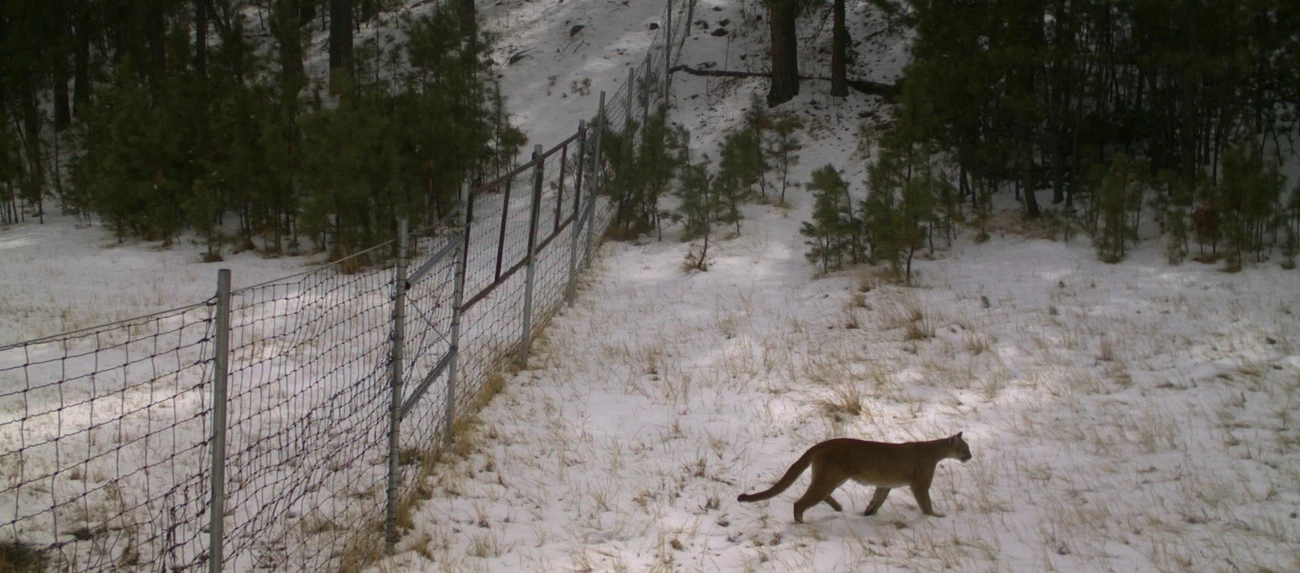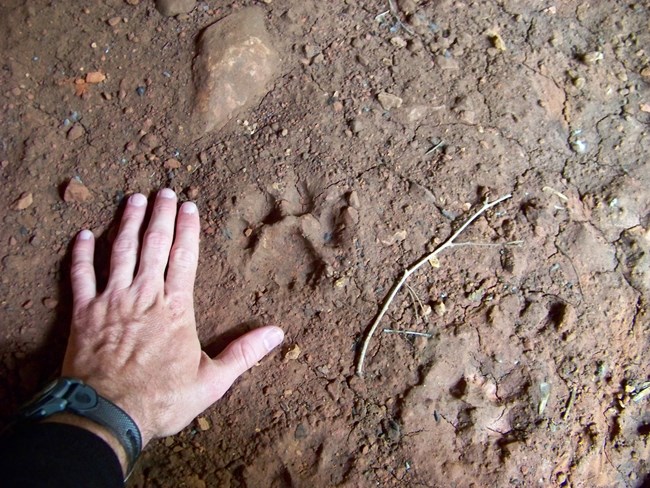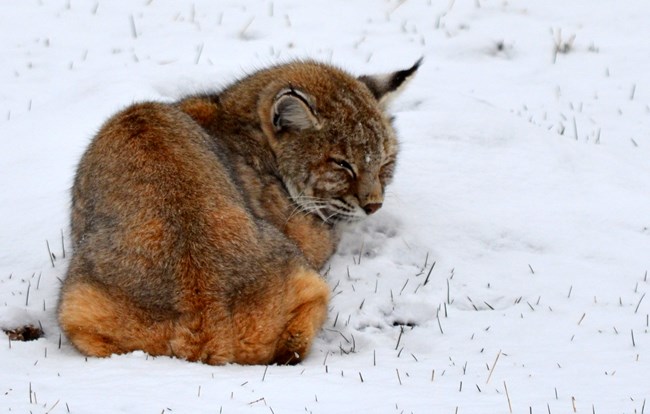
NPS Photo
Among the park's most rarely seen wildlife are two cats; the mountain lion and the bobcat. Both are shy and avoid humans. You are very lucky if you catch a glimpse of one!

NPS Photo Mountain LionCougar. Puma. Panther. Catamount. Mountain lion. These are some of the many names used to refer to Wind Cave's largest predator. Mountain lions are an elusive park visitor but are found throughout the Black Hills. Cats from the Black Hills (usually males) will sometimes travel east and have been found as far away as Tennessee. No more than three or four cats are thought to come into the park. Mountain lions are uniformly brown with a light belly and have a long, black-tipped tail. Cubs and young cats have spots that fade until they are about two years old. Adult males are larger and can weigh over 180 pounds. Deer are the mountain lion's favorite food, but they will also prey on elk, porcupines, and small mammals. After a successful hunt, they will cover their kill with grass and brush and return to feed on it for several days. Exceptionally agile, they can leap forward as much as 40 feet and climb a 12 foot high fence. This means they have no problem getting over the park's border fence. Sometimes called screamers, mountain lions make a variety of sounds including growls, screams, chirps and meows. Though they are the largest cat that can purr, they cannot roar like tigers or African lions. Cubs will stay with their mother for about two years before dispersing to find their own territory. Despite their size, these cats are very shy and usually avoid humans, making them a rare sight. If there's a mountain lion in the area, you might find signs like paw prints or scat. Mountain Lion SafetyAlthough mountain lion sightings are very rare, be proactive to reduce the risk of a conflict:
If you encounter a lion, remember the goals are to convince it that you are not prey and that you may be dangerous. Follow these safety tips:

NPS Photo / Kim Acker BobcatOf the park's two cat species, the bobcat is the smallest, weighing 15-20 pounds on average. Though they can be mistaken for young mountain lion cubs, the bobcat has a much shorter, stumpy tail. They range from gray to a light brown and usually have some spots, and have short tufts on the tips of their ears. Bobcats are most active in late evening and early morning and prefer forested habitats, but are found anywhere in the park. They have a large diet and prey on a variety of animals, especially rabbits, birds, prairie dogs, and other rodents. Adult bobcats can take down prey up to eight times their own size! Like mountain lions, bobcats have defined territories and females raise their young on their own. Kittens will stay with their mother for up to one year as they learn to hunt and fend for themselves. Bobcats have been known to move out of areas with frequent mountain lion activity. |
Last updated: June 26, 2020
